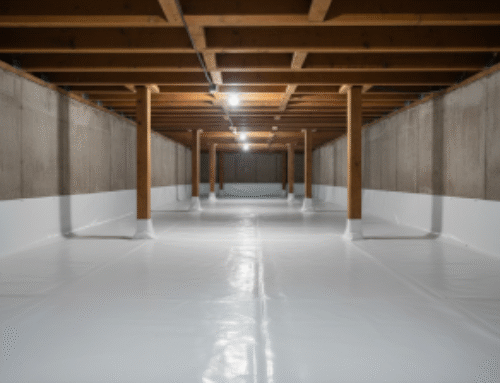Picture this: it’s pouring rain outside, and you head downstairs only to find your basement carpet soaked, boxes floating, and that unmistakable musty smell filling the air.
Basement flooding isn’t just a headache — it can mean thousands of dollars in damage and long-term problems like mold growth and foundation cracks.
That’s where a sump pump comes in.
A sump pump is your home’s first line of defense against water damage.
Whether you deal with frequent flooding, damp crawl spaces, or just want peace of mind during storm season, this device can save you from major repair bills and protect your home’s foundation.
What is a Sump Pump?
At its core, a sump pump is a simple but powerful system designed to keep water out of your basement. Installed in the lowest part of a basement or crawl space, the pump sits inside a sump pit — a specially dug hole that collects groundwater or rainwater seeping toward your foundation.
Think of it like a smart drain that automatically “kicks on” whenever water levels rise too high. Instead of letting that water flood your basement, the sump pump redirects it safely away from your home.
How a Sump Pump Works
Here’s how the process unfolds step by step:
1. Water Collection in the Sump Pit
The system starts with the sump pit, a small, dug-out basin at the lowest point of your basement or crawl space.
Groundwater, rain runoff, or even melting snow naturally flows into this pit through drain tiles, perforated pipes, or soil seepage.
Think of the pit as a “bucket” that catches water before it spreads across your basement floor.
2. Activation by Float Switch
Inside the pit, the sump pump is equipped with a float switch — a device that rises and falls with the water level.
When the water level is low, the pump stays off. Once the water reaches a preset level, the float switch flips on, signaling the pump to start working.
This automation means you don’t have to worry about turning the system on during heavy rains — it activates on its own.
3. Water Drainage
Once the float switch activates, the pump kicks into gear. It pulls water from the pit and pushes it through a discharge pipe that leads outside, usually at least 10–20 feet away from your foundation.
From there, the water drains safely into a storm drain, dry well, or sloped section of your yard where it won’t seep back toward your home.
4. Backflow Prevention
Many sump pumps also include a check valve in the discharge line. This one-way valve ensures water only flows out and never back into the pit, even after the pump shuts off.
5. Automatic Shut-Off
Once the pit is empty, the float switch lowers again, automatically shutting off the pump until the next time water collects.
Types of Sump Pumps
1. Submersible Sump Pumps
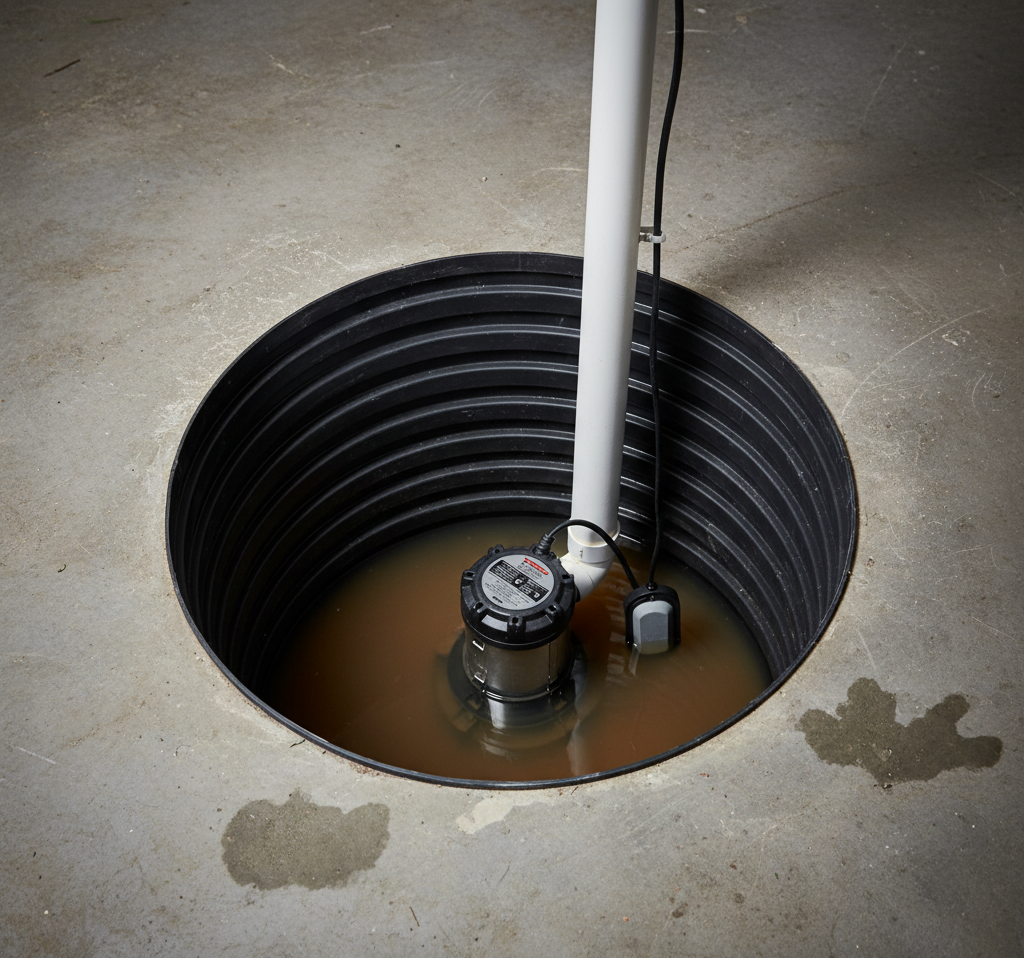
Installed directly inside the sump pit, these pumps are fully submerged in water during operation. The sealed motor sits at the bottom of the pit, pumping water out as soon as the float switch activates.
Best for: Homes with frequent or severe basement flooding where reliability is crucial.
2. Pedestal Sump Pumps
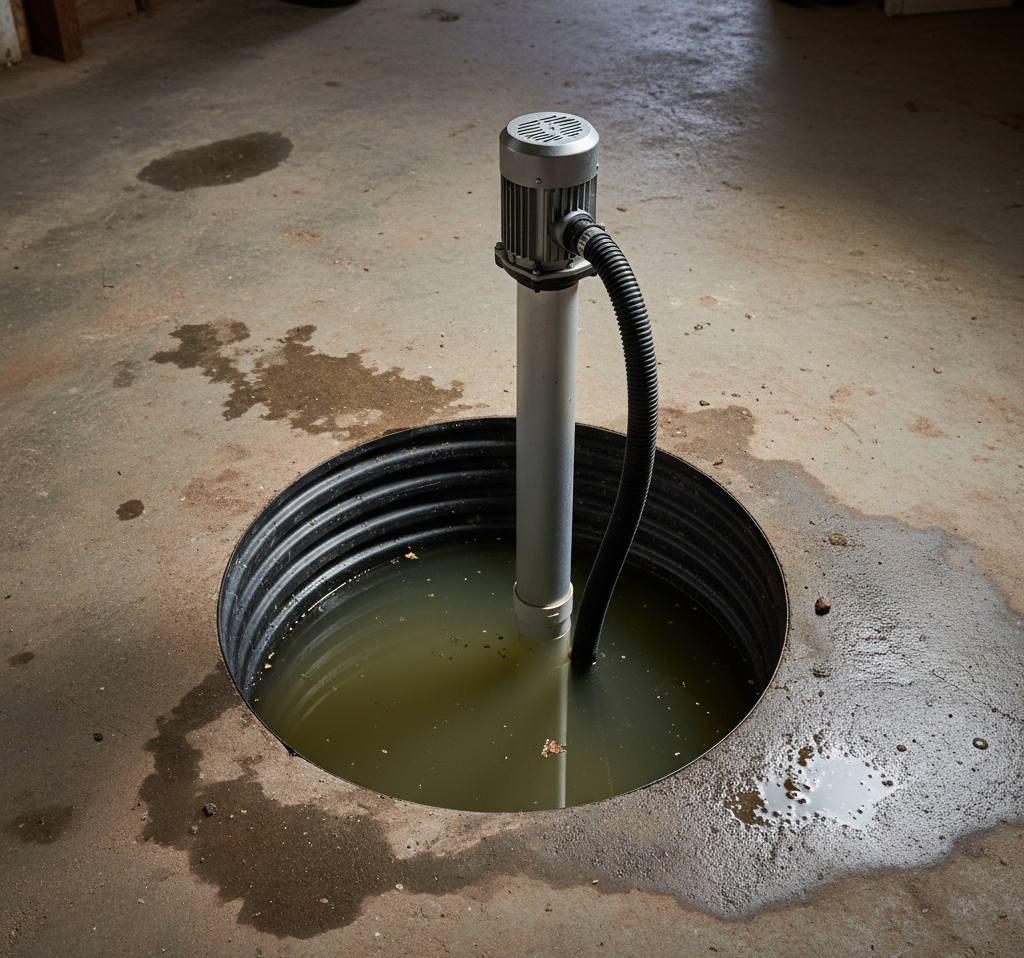
The motor in these sump pumps sits above the sump pit on a tall pedestal, while a hose extends down into the pit to pump water out. Pedestal pumps are affordable and easier to service, though a bit noisier.
Best for: Homeowners who want a budget-friendly option and don’t experience heavy flooding.
3. Battery Backup Sump Pumps
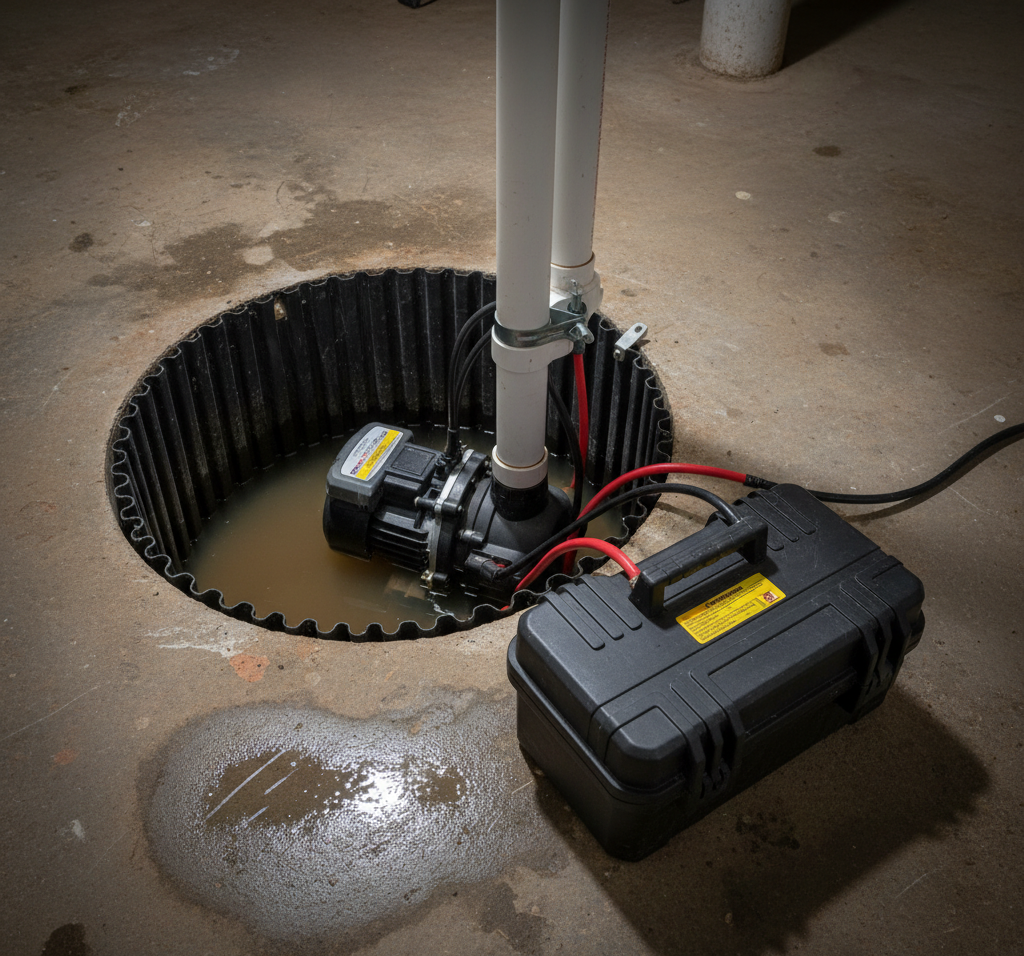
These pumps kick in when your main sump pump loses power during an outage. They use a battery pack that automatically activates if the primary pump can’t run.
Best for: Any home that relies on a sump pump as the main defense against flooding.
4. Combination Systems
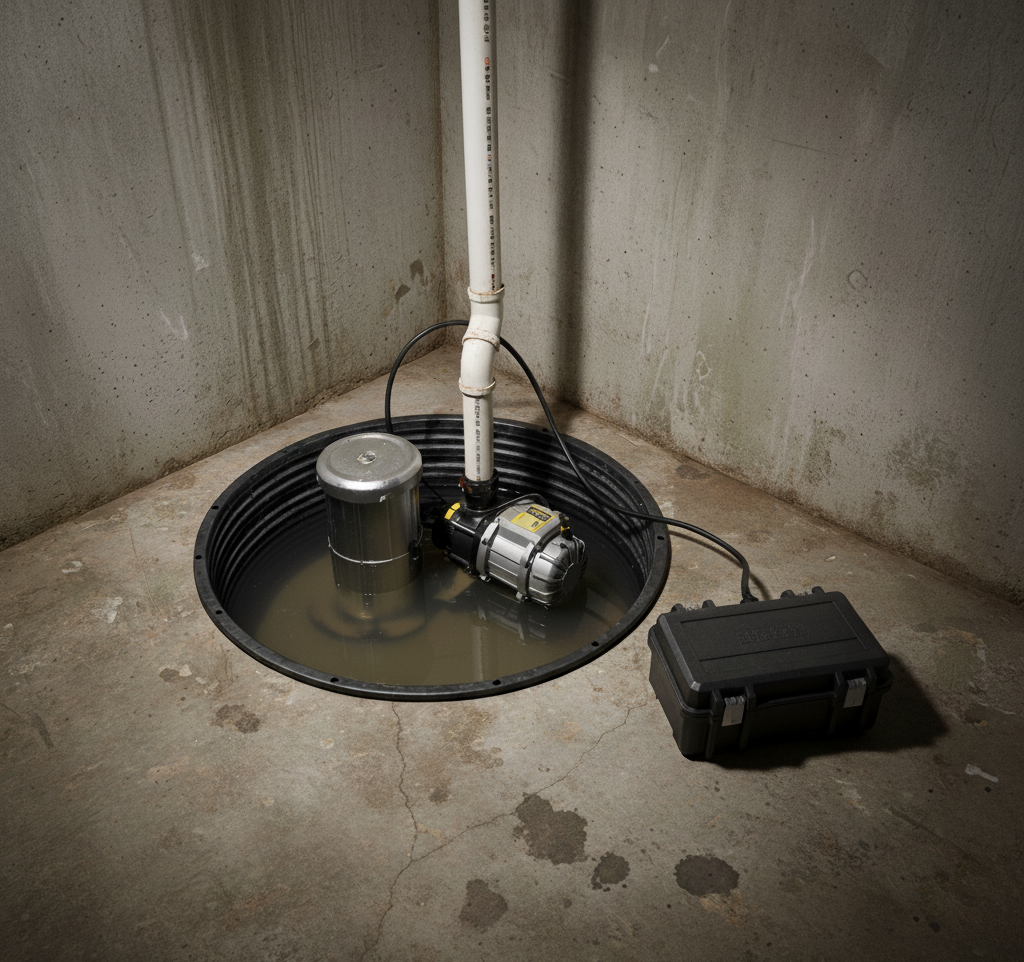
These systems pair a standard submersible pump with a battery backup pump in one package. If the main pump fails or the power goes out, the backup takes over immediately.
Best for: Homeowners who want maximum protection and zero downtime, especially in areas with high water tables or frequent storms.
Why Are Sump Pumps Important?
A sump pump isn’t just another piece of equipment in your basement — it’s a safeguard that protects your home, your health, and your wallet.
Here’s why having one makes such a big difference:
Prevents Basement Flooding
Basement flooding can ruin flooring, drywall, furniture, and anything you’ve stored downstairs. Even an inch of water can lead to thousands of dollars in repairs.
A sump pump is your frontline defense, automatically pumping water out before it becomes a flood, saving you from expensive restoration work.
Reduces Mold and Mildew Growth
Moisture is the perfect breeding ground for mold and mildew, which can spread quickly through your basement and into your home’s air system. This not only causes a musty smell but can also trigger allergies and respiratory issues. A sump pump keeps the space dry, helping maintain clean, breathable indoor air.
Protects Your Home’s Foundation
When water collects around your foundation, it increases hydrostatic pressure on basement walls and floors. Over time, this pressure can cause cracks, leaks, or even structural shifts. By directing water away from your foundation, a sump pump reduces this strain and extends the life of your home’s structure.
Increases Energy Efficiency
Moisture makes your basement damp and cooler, which can force your HVAC system to work harder to regulate indoor temperatures. A dry basement reduces humidity levels throughout your home, lowering energy costs.
Boosts Home Value and Marketability
For prospective buyers, a sump pump is a green flag. It signals that the home is protected against flooding and has been maintained with future safety in mind. This can add resale value and make your property more attractive in a competitive housing market.
Signs You Might Need a Sump Pump
1. Frequent Basement Flooding
If your basement takes on water every time it rains heavily or when snow melts, that’s the most obvious sign. Even small floods add up in repair costs and can cause lasting damage to walls, floors, and belongings. A sump pump provides automatic protection when water levels rise.
2. Standing Water After Storms
You don’t need a full-blown flood to have a problem. Puddles or damp spots in your basement after a storm show that water is entering but not draining properly. Left unchecked, this standing water can lead to mold, musty smells, and foundation problems.
3. Dampness and Musty Odors
A basement that always feels humid or smells like mildew is a red flag for moisture intrusion. Even if you can’t see visible water, excess moisture in the air is often the first stage of water damage — and a sump pump can keep that humidity under control.
4. Cracks in the Foundation
Over time, hydrostatic pressure from water build up may cause visible cracks in your foundation. These cracks let in even more water, creating a cycle of damage. A sump pump helps relieve the pressure by channeling water away before it causes harm.
5. Rising Humidity Upstairs
Moisture doesn’t just stay in the basement. If you notice your whole home feels sticky or your air conditioner seems to work harder than usual, basement moisture could be creeping upward. A sump pump keeps the source of that excess humidity under control.
Alternatives to a Sump Pump
While sump pumps are one of the most reliable ways to keep a basement dry, they’re not the only solution.
Here are some common alternatives:
French Drains
A French drain is a gravel-filled trench with a perforated pipe at the bottom that redirects water away from your foundation. It works by collecting groundwater and rainwater and channeling it to a safe drainage area.
Best for: Homes with persistent surface water issues or soggy yards.
Limitations: A French drain is great for exterior water management but typically works best with a sump pump rather than as a total replacement, especially if you have a basement prone to flooding.
Grading and Landscaping Solutions
Regrading soil so it slopes away from your house encourages water to drain elsewhere. Adding gutters, downspout extensions, and landscaping features like swales (shallow ditches) can also move water farther from the foundation.
Best for: Preventing minor water intrusion before it reaches the foundation.
Limitations: Won’t solve high water table issues or serious basement flooding.
Waterproofing Sealants and Membranes
Waterproof coatings or membranes applied to basement walls and floors can block small leaks and seepage. They create a barrier that resists moisture penetration.
Best for: Managing damp walls and minor leaks caused by porous concrete.
Limitations: This is more of a preventative measure — it won’t handle significant flooding or water pressure. Without proper drainage, water may still push through cracks over time.
Crawl Space Vapor Barriers
For homes with crawl spaces instead of basements, a vapor barrier — a heavy-duty plastic sheet installed over the ground — helps control moisture rising from the soil. It keeps crawl spaces drier, reducing humidity and mold growth.
Best for: Homes with crawl space dampness, mold, or musty odors.
Limitations: Vapor barriers don’t pump out standing water; they’re for moisture control, not flood prevention.
Backup Drainage Systems
Systems like dry wells or exterior drain tiles redirect water from around your foundation to underground gravel-filled basins or municipal storm drains. They give water somewhere else to go instead of pooling near your home.
Best for: Homes with heavy exterior water flow or poor soil drainage.
Limitations: Installation can be invasive and costly. Like French drains, they work best when paired with a sump pump for full protection.
Frequently Asked Questions
Keep Your Basement Dry
A sump pump is more than just a convenience, it’s protection for your home, your belongings, and your family’s health. By preventing flooding, reducing mold, and safeguarding your foundation, sump pumps give homeowners lasting peace of mind.
If you’ve noticed signs of water damage or just want to be proactive, don’t wait until the next storm hits.
Contact Bluegrass Foundation Repair today for sump pump inspection, installation, or crawl space repair — and keep your basement safe and dry year-round.

